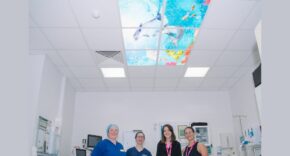
The medical field is undergoing a groundbreaking technological evolution that is reshaping how healthcare is delivered. Staying informed about these trends is crucial for professionals looking to enhance patient outcomes and streamline medical practices. Understanding these innovations can empower you to make informed decisions in your healthcare environment.
The rapid pace of technological advancements in healthcare is revolutionizing how medical services are provided, improving both efficiency and patient care. This transformation encompasses a wide range of innovations, from digital health tools to advanced robotics, each playing a vital role in modern medical practices. Keeping abreast of these changes is essential for healthcare professionals seeking to remain competitive and provide cutting-edge care. For instance, a Highland Park orthodontist might leverage these advancements to enhance patient experiences and outcomes.
Digital health innovations
Digital health has emerged as a powerful force in the healthcare industry, significantly impacting patient care and operational efficiency. This innovation includes a variety of tools such as mobile health apps, electronic health records, and telemedicine platforms that facilitate seamless communication between patients and providers. These digital solutions not only enhance accessibility but also empower patients with greater control over their health information. The adoption of digital health tools has led to improved patient engagement and satisfaction across numerous healthcare settings. This trend underscores the importance of embracing digital health innovations to meet the evolving demands of today’s tech-savvy patients.
Artificial intelligence in healthcare
The integration of artificial intelligence (AI) into healthcare has opened new frontiers in diagnostics and treatment planning. AI technologies are increasingly used for tasks ranging from analyzing medical images to predicting patient outcomes with high accuracy. AI-driven systems can significantly reduce diagnostic errors, thus enhancing patient safety and care quality.
Moreover, AI’s ability to process large datasets quickly allows for the development of personalized treatment plans tailored to individual patient needs. This level of customization not only improves clinical outcomes but also optimizes resource allocation within healthcare facilities. As AI continues to evolve, its applications will undoubtedly expand, offering even greater benefits to both practitioners and patients alike.
Telehealth and remote monitoring
The rise of telehealth services marks a significant shift to more accessible and convenient healthcare delivery models. By enabling virtual consultations, telehealth reduces geographical barriers and makes it easier for patients to access medical expertise regardless of location. Telehealth usage has surged, highlighting its growing acceptance among patients and providers.
Remote monitoring technologies further complement telehealth by allowing continuous tracking of patient health metrics outside traditional clinical settings. These systems provide valuable real-time data that can be used to detect potential health issues early on, thereby preventing complications and hospital readmissions. The combined impact of telehealth and remote monitoring is transforming how care is delivered, making it more proactive and preventive.
Wearable technology and health analytics
Wearable technology has gained immense popularity as a tool for personal health management, offering insights into various aspects of an individual’s well-being. Devices like fitness trackers and smartwatches monitor activities such as heart rate, sleep patterns, and physical activity levels, contributing valuable data for both users and healthcare providers. Wearables can improve health outcomes by encouraging healthier lifestyle choices.
The data collected from these devices plays a crucial role in enhancing healthcare strategies through advanced analytics. By analyzing trends over time, healthcare professionals can identify areas where interventions may be necessary or assess the effectiveness of current treatment plans. As wearable technology continues to evolve, its potential to positively impact patient care will likely expand further.












